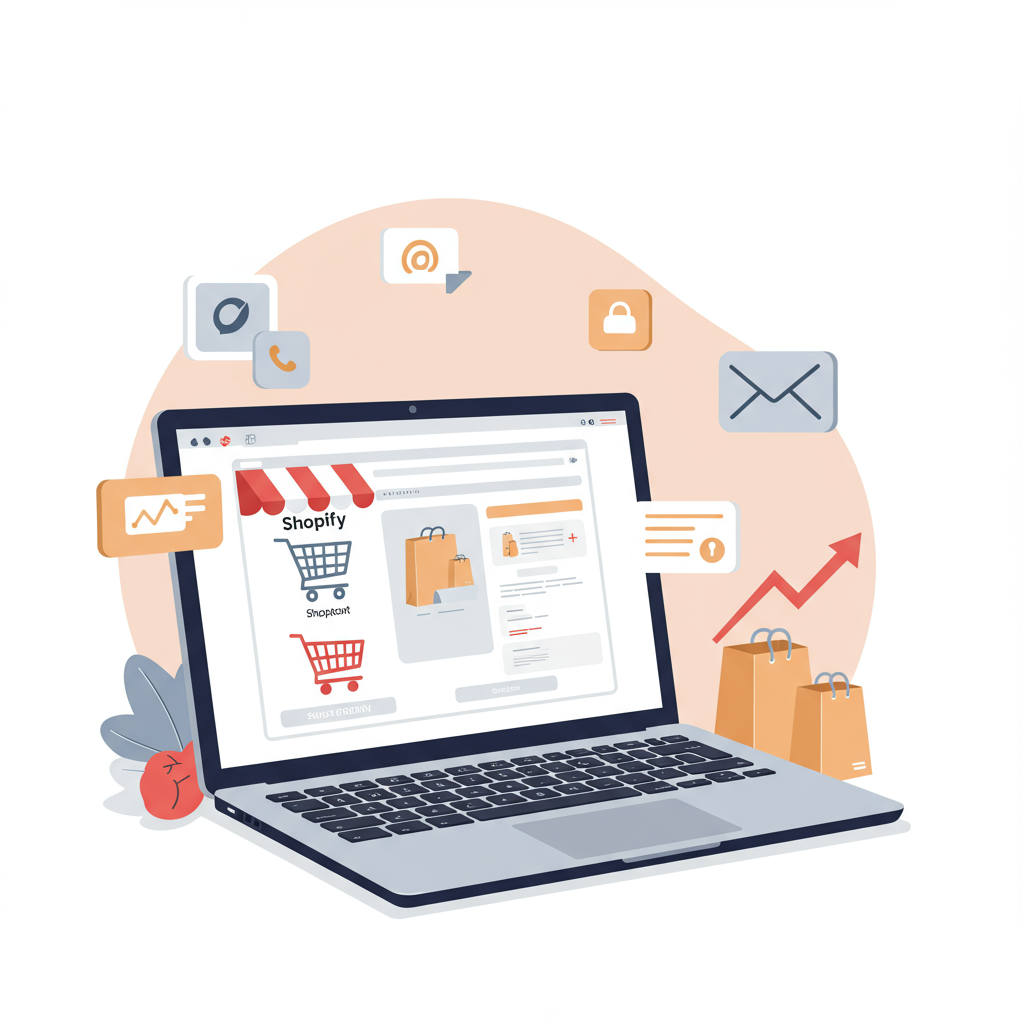Turning Lost Sales into Loyal Customers with Strategic Email Follow-ups
As a merchant, I know the sting of an abandoned cart. You’ve done the hard work of attracting a customer, guiding them through your store, and they’ve even added items to their cart. Then, poof! They’re gone.
It’s a common scenario, with industry averages showing abandonment rates often hovering around 70%. That’s a huge chunk of potential revenue just slipping through your fingers.
But what if I told you there’s a powerful, often underutilized tool that can help you recover a significant portion of those lost sales? I’m talking about abandoned cart email campaigns, and they’ve been a game-changer for my Shopify store.
Email isn’t dead; it’s a direct, personal line to your customer. Unlike ads, which can feel intrusive, an email can be a helpful reminder, a gentle nudge, or even an offer that seals the deal.
Before we dive into the ‘how,’ let’s briefly consider ‘why.’ Customers abandon carts for various reasons: unexpected shipping costs, complex checkout processes, just browsing, distractions, or even technical glitches.
Our goal with these emails isn’t to annoy, but to address these potential issues, remind them of the value they almost purchased, and make it incredibly easy for them to complete their order.
From my experience, a single email often isn’t enough. A well-structured series of 2-3 emails tends to yield the best results. Think of it as a conversation, not a one-off shout.
The first email should go out quickly, ideally within 30 minutes to an hour of abandonment. This catches them while your store and products are still fresh in their mind. It’s a simple, non-pushy reminder.
For this first email, I keep it light. A friendly ‘Did you forget something?’ or ‘Your cart is waiting!’ with a clear link back to their cart. No hard sell, just helpfulness.
If they haven’t converted after the first email, I send the second one around 12-24 hours later. This is where I start to re-emphasize the value of the products they left behind.
Here, I might highlight benefits, showcase product images, or even include a customer testimonial related to the items. I also ensure the call to action (CTA) is prominent and clear.
The third email, if needed, goes out around 24-48 hours after the second. This is often where I introduce a small incentive or a sense of urgency.
A small discount (e.g., 10% off), free shipping, or a limited-time offer can be incredibly effective here. Be careful not to train customers to always abandon for a discount, but for high-value carts, it’s worth it.
Your subject line is paramount. It’s the gatekeeper. I aim for clear, concise, and intriguing lines. Personalization (‘[Customer Name], your cart is waiting!’) often boosts open rates.
Other effective subject lines I’ve used include: ‘Oops! You left something behind…’, ‘Don’t miss out on your items!’, or ‘A special offer for your cart!’
Beyond just the customer’s name, truly personalize the email by showing the exact items they left in their cart, complete with images and prices. This makes the email highly relevant.
Every email needs a single, prominent call to action. ‘Complete Your Order,’ ‘Go to Your Cart,’ or ‘Shop Now’ on a brightly colored button works best. Make it impossible to miss.
Incorporating social proof, like ‘Others are loving these items!’ or ‘Only a few left in stock!’ can create a subtle sense of urgency and build trust.
Sometimes, I’ll include a small section with common FAQs, like ‘What about shipping?’ or ‘What’s your return policy?’ This proactively addresses potential concerns.
Remember, a significant portion of your customers will open these emails on their phones. Ensure your emails are fully responsive and look great on any device.
Maintain your brand’s voice, colors, and logo throughout the emails. This reinforces trust and provides a seamless experience from your store to their inbox.
Shopify has built-in abandoned cart recovery, but for more advanced features like multi-email flows, A/B testing, and deeper personalization, I highly recommend using a dedicated email marketing app like Klaviyo, Omnisend, or Mailchimp.
Never set it and forget it. I constantly A/B test different subject lines, CTA button colors, incentive amounts, and even the timing of my emails. Small tweaks can lead to significant improvements.
Track your open rates, click-through rates, and most importantly, your conversion rates from these campaigns. This data is invaluable for refining your strategy and maximizing your recovery.
I’ve shared my insights on building effective abandoned cart email campaigns. What are your thoughts on this approach? Have you found success with similar strategies, or do you have different tips to share?
Recovering abandoned carts isn’t just about getting a sale; it’s about understanding your customer and providing a helpful, timely reminder. It’s a crucial part of any successful Shopify strategy.
If you haven’t optimized your abandoned cart emails yet, I urge you to start today. It’s one of the most direct and profitable ways to boost your revenue without spending more on acquisition.






